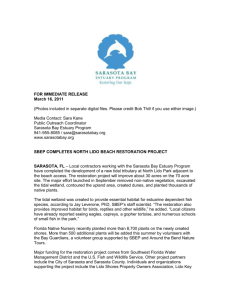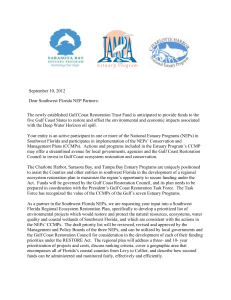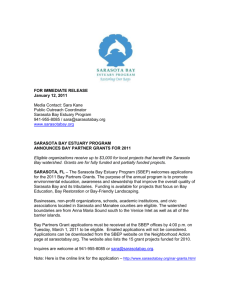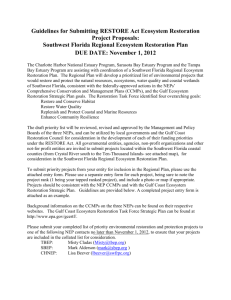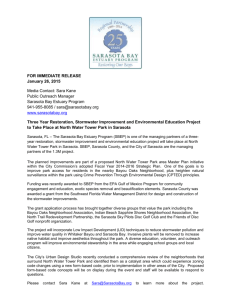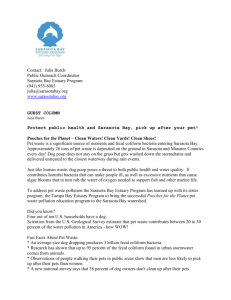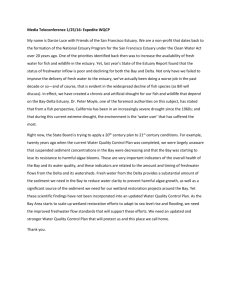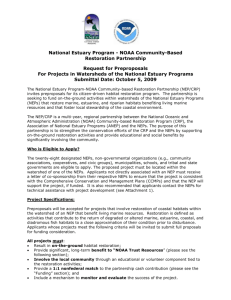Regional NEPs Gulf Ecosystem Plan Approved
advertisement
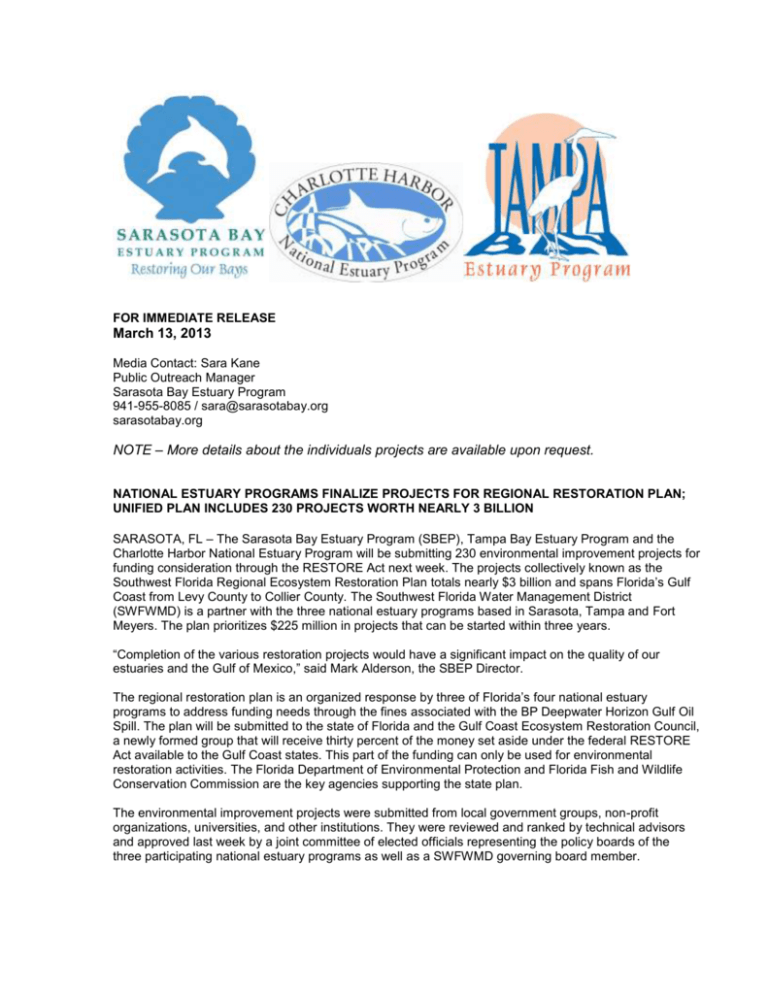
FOR IMMEDIATE RELEASE March 13, 2013 Media Contact: Sara Kane Public Outreach Manager Sarasota Bay Estuary Program 941-955-8085 / sara@sarasotabay.org sarasotabay.org NOTE – More details about the individuals projects are available upon request. NATIONAL ESTUARY PROGRAMS FINALIZE PROJECTS FOR REGIONAL RESTORATION PLAN; UNIFIED PLAN INCLUDES 230 PROJECTS WORTH NEARLY 3 BILLION SARASOTA, FL – The Sarasota Bay Estuary Program (SBEP), Tampa Bay Estuary Program and the Charlotte Harbor National Estuary Program will be submitting 230 environmental improvement projects for funding consideration through the RESTORE Act next week. The projects collectively known as the Southwest Florida Regional Ecosystem Restoration Plan totals nearly $3 billion and spans Florida’s Gulf Coast from Levy County to Collier County. The Southwest Florida Water Management District (SWFWMD) is a partner with the three national estuary programs based in Sarasota, Tampa and Fort Meyers. The plan prioritizes $225 million in projects that can be started within three years. “Completion of the various restoration projects would have a significant impact on the quality of our estuaries and the Gulf of Mexico,” said Mark Alderson, the SBEP Director. The regional restoration plan is an organized response by three of Florida’s four national estuary programs to address funding needs through the fines associated with the BP Deepwater Horizon Gulf Oil Spill. The plan will be submitted to the state of Florida and the Gulf Coast Ecosystem Restoration Council, a newly formed group that will receive thirty percent of the money set aside under the federal RESTORE Act available to the Gulf Coast states. This part of the funding can only be used for environmental restoration activities. The Florida Department of Environmental Protection and Florida Fish and Wildlife Conservation Commission are the key agencies supporting the state plan. The environmental improvement projects were submitted from local government groups, non-profit organizations, universities, and other institutions. They were reviewed and ranked by technical advisors and approved last week by a joint committee of elected officials representing the policy boards of the three participating national estuary programs as well as a SWFWMD governing board member. Projects include large-scale coastal habitat restoration, land acquisition, water quality enhancements, applied research, monitoring enhancements, and diverse education programs. Local projects being recommended for funding include a septic system project at Philippi Creek in Sarasota County, expansion of coastal habitat in Manatee County’s Robinson Preserve, environmental restoration on Dona Bay in Sarasota County, habitat restoration in parks throughout the barrier island chain, wetland restoration, oyster reef restoration, storm water improvements in local watersheds using low impact design techniques, and many environmental education projects. The Gulf Coast Ecosystem Restoration Council and State of Florida are tentatively scheduled to release its Gulf-wide restoration plan in early April. The Council continues to seek public input on how its share of the RESTORE Act funds should be spent. The fines are expected to range from $4 billion to $25 billion depending on the outcome of ongoing negotiations. -30- The Sarasota Bay Estuary Program is dedicated to restoring the area's greatest natural asset—Sarasota Bay. Its unique program strives to improve water quality, increase habitat and enhance the natural resources of the area for use and enjoyment by the public. Sarasota Bay is one of 28 protected estuaries in the U.S. The SBEP was founded in 1989 and its partners include Sarasota County, Manatee County, City of Sarasota, City of Bradenton, Town of Longboat Key, Southwest Florida Water Management District, the Florida Department of Environmental Protection, and the U.S. Environmental Protection Agency.
